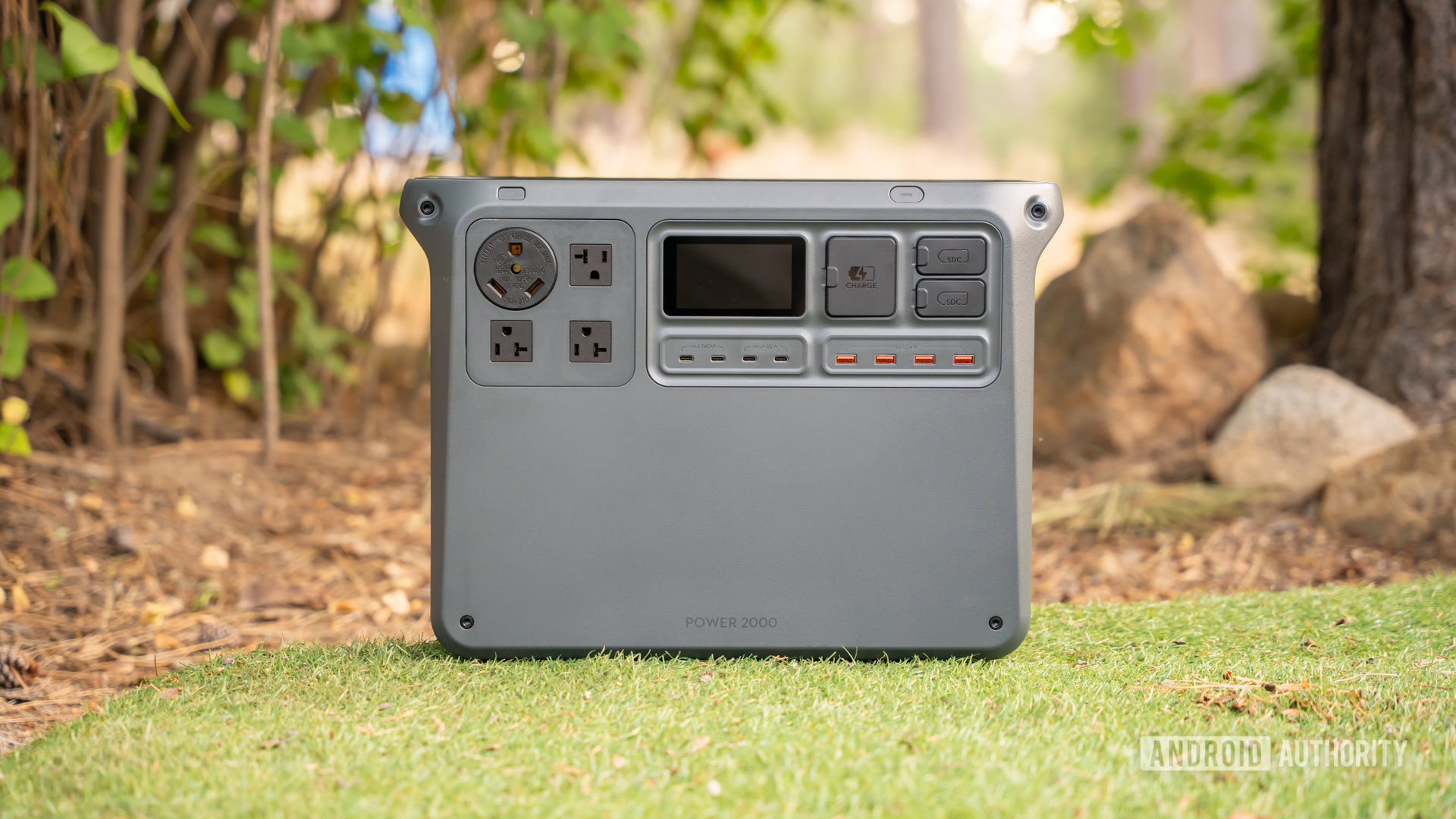DJI Power 2000 Portable Power Station
The DJI Power 2000 Portable Power Station is a great device for those who want ample power and capabilities without sacrificing portability. It has a large 2,048Wh battery, 3,000W of output, and a really nice selection of ports. Its 30-amp AC outlet can even power an RV!
When an outage occurs or you need power during your adventures, nothing is a lifesaver quite like a power station. I’ve been testing some of the best ones around, and the latest one I’ve had my hands on is the Power 2000 from DJI, the popular drone and gimbal maker.
While a very trusted brand in other industries, DJI isn’t widely recognized for its portable power stations, and the truth is previous models didn’t do much to differentiate themselves from the competition. But spoiler alert: this one is pretty cool. Let’s dig into the details and see if this will be your battery of choice.
DJI Power 2000 battery and output
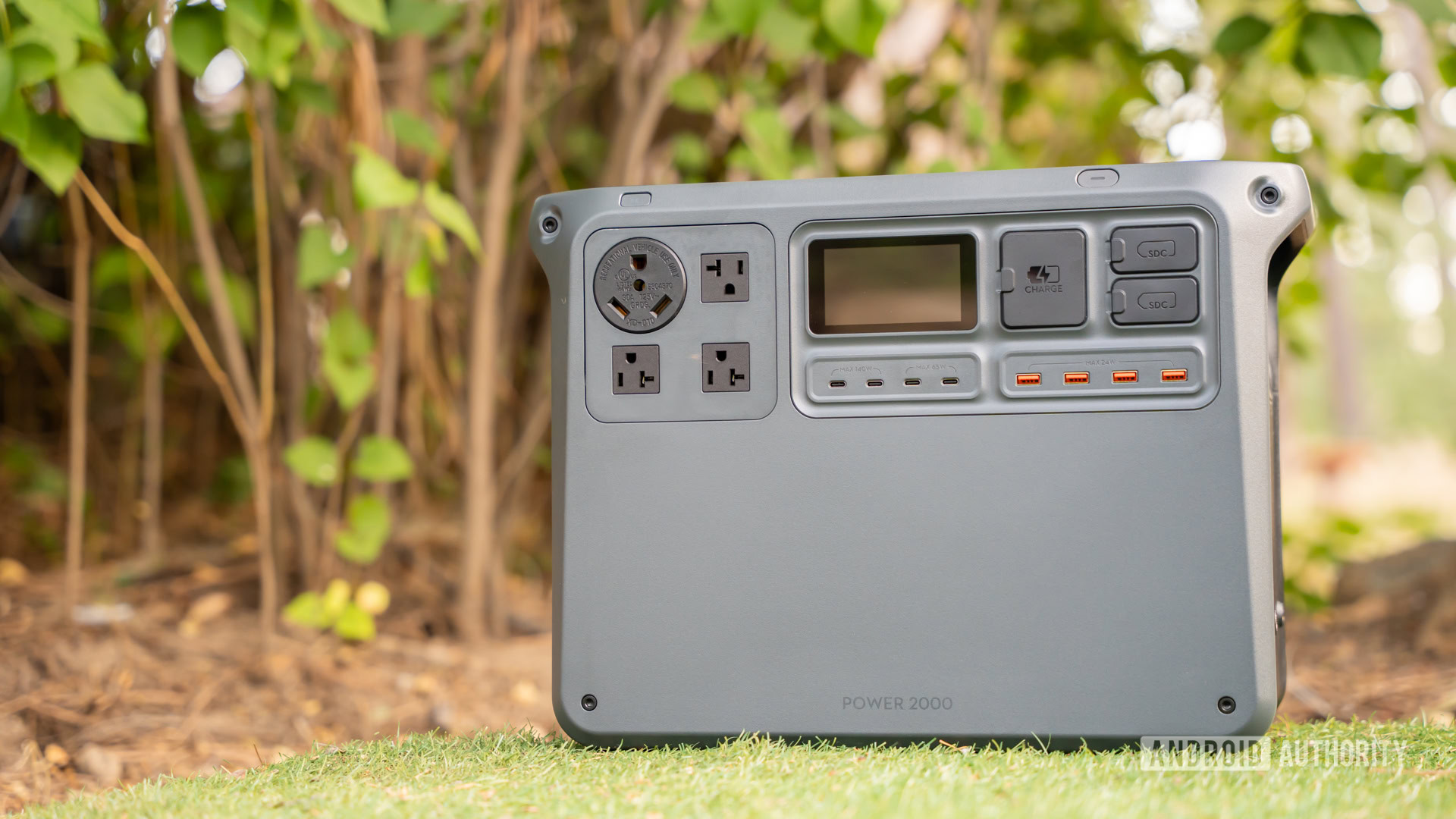
Edgar Cervantes / Android Authority
Let’s start with the battery capacity, which is among the essential features of these massive battery beasts. The DJI Power 2000 Portable Power Station comes with a 2,048Wh battery. To put things into perspective, that’s enough to charge an average phone about 118 times, or a laptop 18 times. It can also run a microwave for 2.6 hours.
Additionally, it has a maximum stable output of 3,000W. High-power appliances like air fryers, microwaves, and kettles usually use about 1,200W to 1,800W, so this one can even be enough to run small to medium air conditioners.
Of course, I didn’t have time to charge my phone 118 times, but I did test it with other high-power appliances. I started with a couple at a time; I plugged in my microwave, kettle, and fridge simultaneously and then ran them all at the same time. This gave me an output of 2,000W on the battery, and it could run them all continuously for a bit under an hour — about 53 minutes, to be exact.
Still, that isn’t using it to its limits, right? So instead, I plugged a secondary power station (the Ampace Andes 1500) and limited its charge to about 830W. The idea was to get close to 3,000W. Again, I turned them all on, and the DJI Power 2000 powered them without a hiccup for nearly 35 minutes, outputting close to 2,850W. This is kind of unbelievable; it is a lot of power and output for a device of this size.
I also took it outside to power a Sylvox outdoor TV I’ve been testing recently. The TV uses a bit over 200W continuously, and using the DJI Power 2000, I would have been able to run it between eight to nine hours. I am busy, so I didn’t watch for that long, but that estimate is lovely!
The DJI Power 2000 is kind of unbelievable; it has a lot of power and output for a device of its size.
The cool thing is that it has Uninterruptible Power Supply (UPS) mode. This means that you can plug your electronics into it, and if there is an outage, the battery will automatically activate in 0.01 seconds and keep them running. I simulated an outage switching a breaker off, and it worked perfectly.
When it’s time to recharge, you can do so in multiple ways. Of course, you can plug it into an AC outlet and recharge it at 1,800W, which should juice up the battery in about 1.5 hours. You can also charge it using your car, and it can be even faster if you have the right accessories. A 1kW super-fast charger can refill it in 145 minutes, and a 1.8kW solar/car super-fast charger reduces the time to just 75 minutes.
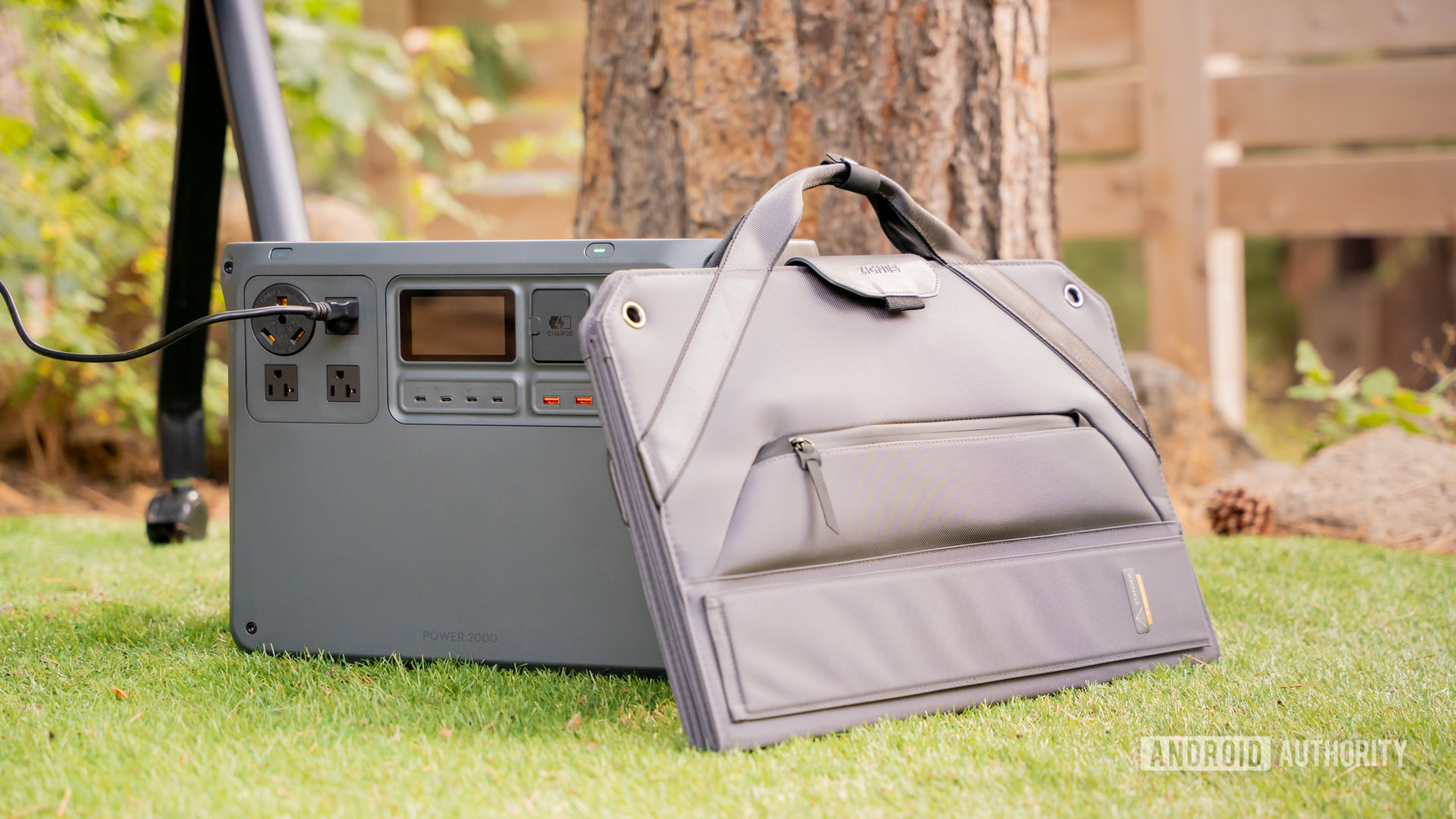
Edgar Cervantes / Android Authority
I like having off-the-grid options. Given that you buy the DJI Solar Panel Adapter Module, the unit supports up to a whopping 1,800W of solar power input. I got to test this with a single 100W solar panel. It was nice and portable, but 100W wasn’t enough to move the needle in recharging. It’s a nice option if you’re in a sunny place and want to extend the battery life a bit, though. Otherwise, you might want to get more panels or more powerful ones.
Let’s talk ports!

Edgar Cervantes / Android Authority
One thing I didn’t like about the DJI Power 1000 was that it needed more ports. Two AC outlets, two USB-A ports, two USB-C connections, and two SDC proprietary DJI ports didn’t seem like much for a high-capacity portable power station.
This time around, the selection is much nicer. You get four AC outlets, one of which is a powerful 30-amp port for RVs. Yes, you could power an RV with this little guy! This kind of feature is usually reserved for the bigger guys, such as the Anker SOLIX F3800 series or the Jackery Explorer 5000 Plus. It’s also rare in medium power stations, so finding the port here was a pleasant surprise.
The DJI Power 2000 has an ample port selection, including a 30-amp AC port. This is usually reserved for the bigger guys!
While I have no RV, I did use the 30-amp port to recharge an Anker SOLIX F3000 Portable Power Station that I’ve also been testing, and it worked perfectly. I just had to slow down the charging speed to the DJI Power 2000’s 3,000W max output.
It also has a nice selection of four USB-C and four USB-A ports. Two USB-C ports can reach 140W, making it possible to charge laptops, tablets, and more with ease. The other two max out at 65W, which is still plenty fast. The USB-A connections can reach 24W each.
Additionally, it has a couple of SDC ports. This is DJI’s proprietary port, which is meant to fast-charge DJI batteries. Additionally, they can be used for expansions, such as the solar panel adapter module or additional batteries.
The DJI Power 2000 is impressively good for its size
All things considered, this is easily among the most capable power stations of this size and weight. It measures 448 × 225 × 324 mm (17.64 x 8.86 x 12.76 in) and weighs 22 kg (48.50 lbs).
At this size and weight, I would compare it to something like an Ampace Andes 1500, which measures 436 × 195 × 335 mm (17.16 x 7.68 x 13.19) and weighs 16.54 kg (36.46 lbs).

Edgar Cervantes / Android Authority
Sure, the DJI Power 2000 is a bit larger and heavier, but you get quite a bit more. The Ampace Andes 1500’s battery is smaller at 1,462Wh, the stable output is lower at 2,400W, it has two USB-C ports, and while it has four AC outlets, there won’t be a 30-amp port in there. DJI’s battery has no AC outlet, though. That said, I hardly ever use that port, and some of you DJI users might prefer the addition of the SDC ports.
Sure, the DJI Power 2000 is a bit larger and heavier, but you get quite a bit more than what the competition offers.
Also, here’s one personal comment about the power station’s design that I wish other brands would copy: I happen to like that the DJI Power 2000 has all ports on one side. This makes it easy to plug everything into it without having to turn the battery around to find ports on the other sides. Everything is always laid out right in front of you, even the charging port.
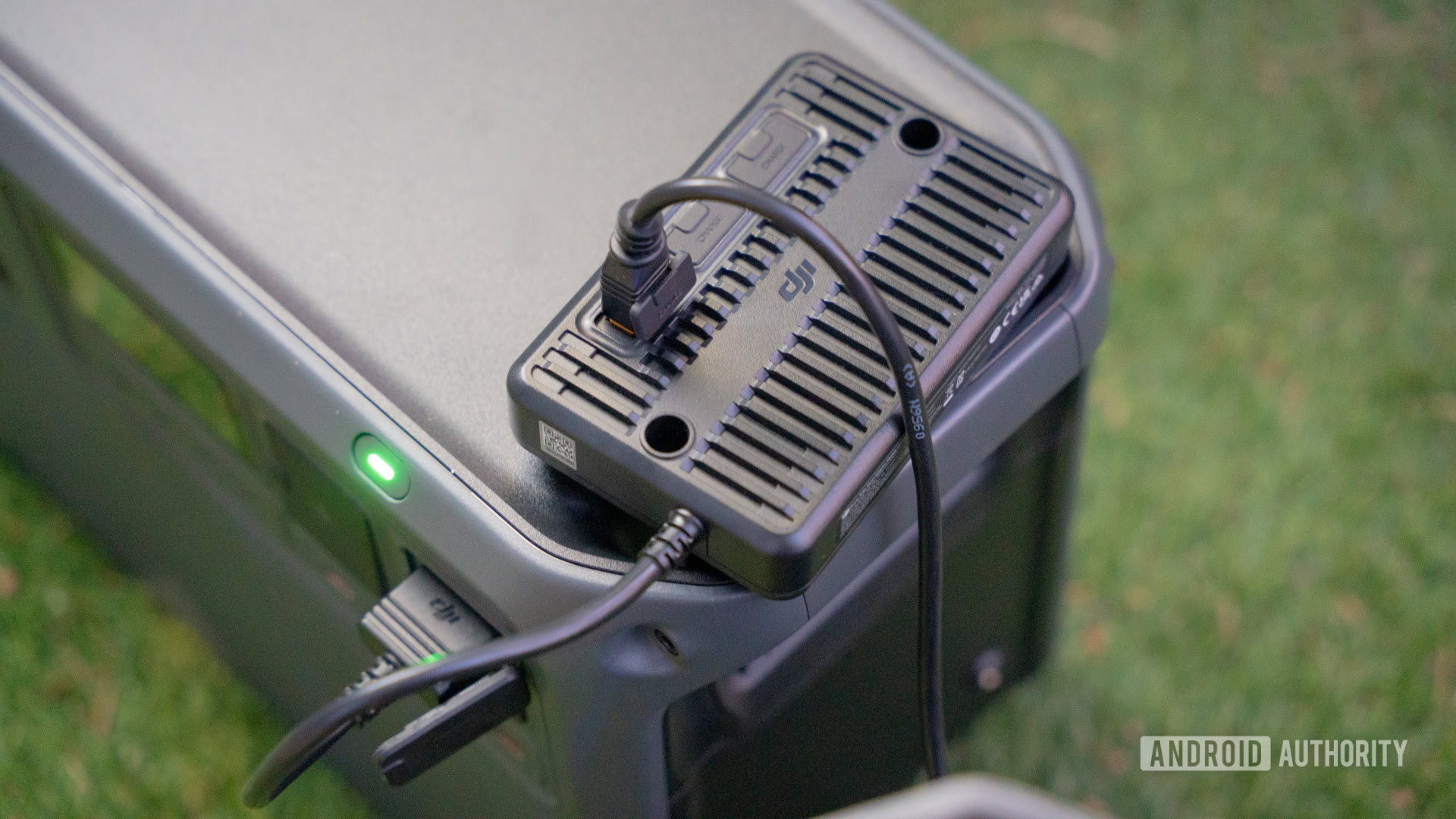
Edgar Cervantes / Android Authority
If I had to complain about anything, it would be that DJI’s new power station needs a secondary accessory to use a solar panel. This is an extra expense; most other power stations have such ports built in. That said, the DJI Solar Panel Adapter Module can be attached to the side, so you can make it feel like it is integrated.
I also wish the power station had wheels and a handle, as it is getting to that weight where it isn’t really easy to carry around easily. It’s OK for short walks, but carry it for about five minutes and you’ll start breaking a sweat and switching hands. But of course, DJI also sells you a DJI Power Series Hand Truck separately, too.
DJI Power 2000 Portable Power Station review verdict: Is it worth it?
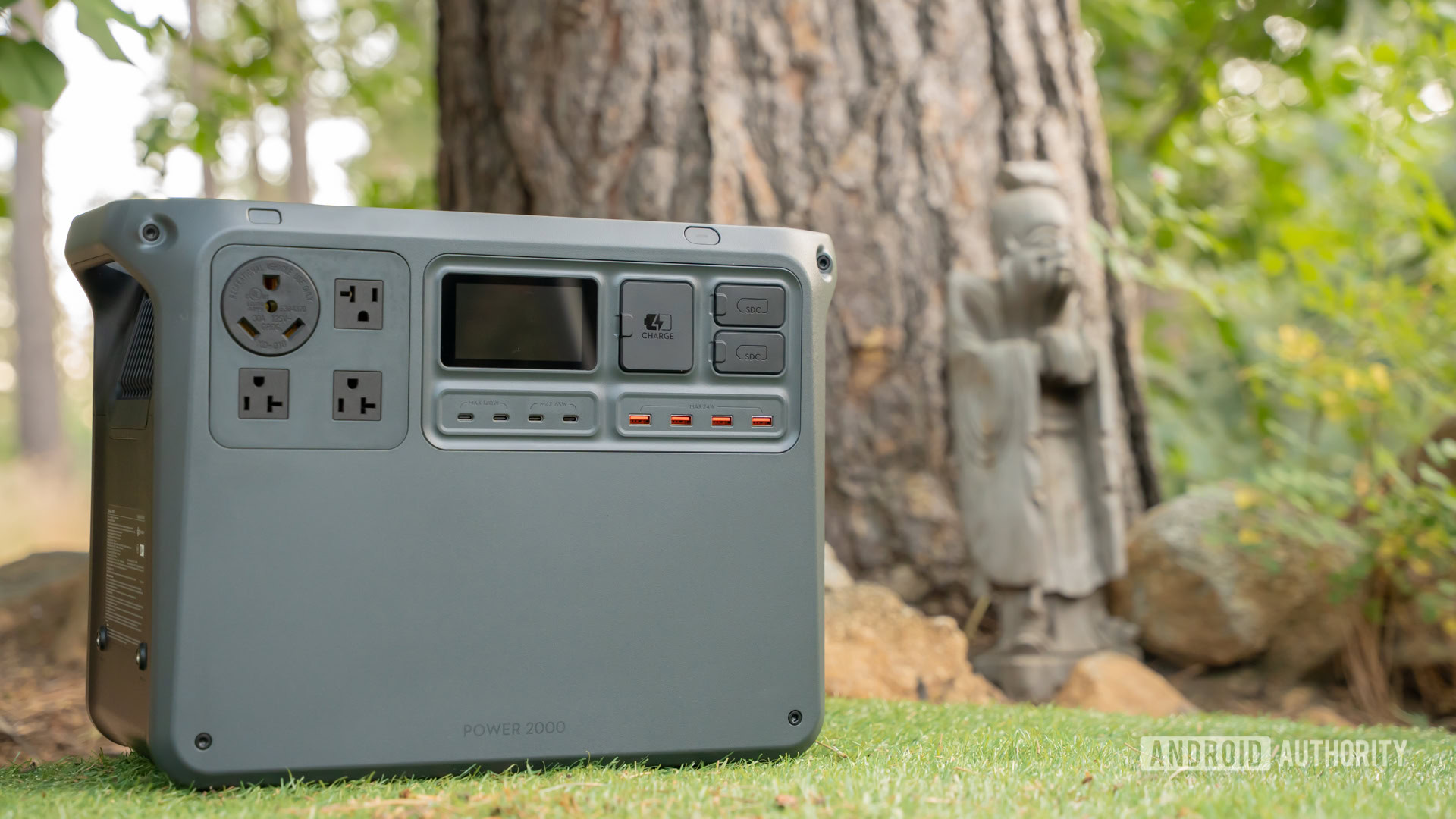
Edgar Cervantes / Android Authority
The DJI Power 2000 Portable Power Station retails for $1,899. Its closest competitors are the $1,999 Anker SOLIX F2000, $2,199 Jackery Explorer 2000 Plus, and the $1,399 Ampace Andes 1500. The Anker and Jackery options are great, but they are also more expensive, and the benefits aren’t really huge. To us, the real competitor here is the Ampace Andes 1500, which is a bit smaller but also slightly less capable. That said, it is also $500 less!
The trick here is that DJI power station deals can be common. For example, it just came out and is $1,299 as of this writing. If you can catch a deal like this one, it is definitely the uncontested winner.
The DJI Power 2000 Portable Power Station aims to position itself somewhere in the middle. It is pretty portable, but it packs plenty of power. This makes it an excellent alternative for those who don’t mind carrying a nearly 50-pound battery in exchange for stunning performance. It can run multiple appliances all at once, even high-power ones.
The DJI Power 2000 positions itself well right in the middle of the power station market.
There is a very nice selection of ports, and current DJI users will also benefit from the SDC connections, which can also add extra ports and functionality using DJI’s modules. And thanks to the 30-amp port, it can even be a great portable acquisition for RV owners or anyone who could use such a standard.
Overall, I would recommend this one to those who can’t make do with the smaller power stations, but also don’t need the gigantic, super-powerful ones. It’s easy to hide away under the bed, in a medium cabinet, or a small closet, and it will be a handy battery that can handle all your main electronics during an outage. Additionally, it will be able to handle any picnic or shorter camping trip. I can honestly say it is my favorite for those who want to carry their power station relatively easily, but would rather not sacrifice performance.


DJI Power 2000 Portable Power Station
Large 2,048Wh capacity • Max 3,000W output • Wide variety of ports
MSRP: $1,899.00
The DJI Power 2000 Portable Power Station is a great device for those who want ample power and capabilities without sacrificing portability. It has a large 2,048Wh battery, 3,000W of output, and a really nice selection of ports. Its 30-amp AC outlet can even power an RV!

